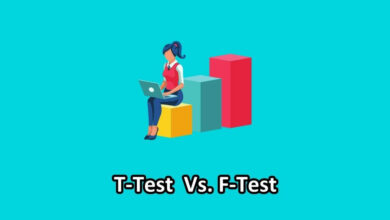In the fast-paced business world, predicting the future is a skill every organization must master. Imagine having a crystal ball that could unravel the mysteries of what lies ahead – welcome to the world of Forecasting and Planning.
In this article, we’ll delve into the intricacies of these two vital concepts, uncovering the methods, challenges, and strategies that propel businesses toward success.
Forecasting and Planning are the dynamic duo steering businesses through the unpredictable waters of the future. While forecasting entails predicting future trends based on historical data, planning involves charting a course of action to achieve organizational goals.
Forecasting Vs Planning (A Comparison)
| Forecasting | Planning |
|---|---|
| Forecasting is the process of using historical data and analytical techniques to make predictions about future trends, outcomes, or events. | Planning is the strategic process of setting goals, defining the steps or actions needed to achieve those goals, and allocating resources accordingly. |
| Forecasting involves using historical data and statistical models to estimate future trends and outcomes. | Planning is the strategic process of outlining specific actions and resources needed to reach desired goals or outcomes. |
| It is primarily future-focused, delving into patterns and trends over time to make informed predictions about upcoming events or conditions. | It encompasses a broader time orientation, considering past experiences, evaluating current situations, and projecting future goals. |
| It can be somewhat rigid due to its reliance on historical data and statistical analyses, which may limit its adaptability to sudden changes. | Planning demands adaptability to respond effectively to unexpected events or changes. |
| Forecasting serves as a supportive tool for decision-making by providing valuable insights and predictions. | Planning, as a comprehensive decision-making process itself, involves setting goals, formulating strategies, and allocating resources. |
| Forecasting has a broader scope, encompassing various factors such as market trends, demand forecasts, and external variables that may impact future outcomes. | Planning narrows its focus to specific actions, resources, and steps required to achieve defined objectives. |
What is Forecasting?
Forecasting is a crystal ball for businesses, a systematic process of predicting future trends based on historical data and analysis. It involves extrapolating past patterns to make informed estimations about what lies ahead. From financial forecasts to demand predictions, businesses rely on this art to navigate uncertainties.
Key Methods and Techniques in Forecasting
Forecasting isn’t a one-size-fits-all endeavor. Businesses employ various methods like time series analysis, regression models, and machine learning algorithms. Each method has its strengths and weaknesses, catering to different industries and scenarios. The key is to choose the right tool for the job and refine the approach as data evolves.
What is Planning?
Planning is the blueprint of success, the process of setting goals and outlining the steps to achieve them. It involves determining where an organization wants to go and how to get there. From high-level strategies to day-to-day operations, planning permeates every facet of an organization.
Types of Planning
- Strategic Planning: This involves defining an organization’s long-term goals and the actions needed to achieve them. It’s the big-picture thinking that sets the stage for success.
- Tactical Planning: Focused on shorter time frames, tactical planning outlines specific actions and resources required to implement strategic goals.
- Operational Planning: This is the nitty-gritty – the day-to-day planning that ensures the smooth execution of tasks to meet tactical objectives.
Key Differences Between Forecasting and Planning
- Nature: Forecasting deals with predicting future outcomes, while planning revolves around laying out the steps to achieve those outcomes.
- Time Orientation: Forecasting is future-focused, often analyzing trends over time, while planning encompasses past, present, and future actions.
- Flexibility: Forecasting can be rigid as it relies on data, whereas planning demands adaptability to respond to unforeseen circumstances.
- Purpose: Forecasting aids in decision-making by providing insights, while planning is the decision-making process itself.
- Scope: Forecasting is broader, encompassing market trends, demand, etc., while planning is specific, dealing with actions and resources.
Challenges in Forecasting
Common Pitfalls and Challenges
Forecasting isn’t foolproof. Common pitfalls include overreliance on historical data, unforeseen external factors, and the ever-elusive human factor. Striking the right balance between optimism and caution is crucial.
Addressing Uncertainties and Risks
Uncertainties are the nemesis of accurate forecasts. Embracing risk management strategies, scenario planning, and staying abreast of industry changes can help organizations navigate the turbulent seas of uncertainty.
Strategies to Mitigate Challenges
To enhance accuracy, organizations must invest in advanced analytics, leverage real-time data, and foster a culture of continuous improvement. Regularly reassessing forecasting models and methodologies ensures adaptability in the face of change.
Challenges in Planning
Planning faces challenges such as unforeseen market shifts, changing customer demands, and internal resistance to change. Overcoming these hurdles requires a dynamic and flexible approach.
Plans are not set in stone. Flexibility is key to adapting to unforeseen circumstances. Organizations must be agile in adjusting plans without compromising long-term objectives.
To overcome planning challenges, organizations should foster a culture of collaboration, encourage open communication, and regularly reassess plans based on changing circumstances. Integrating technology for real-time monitoring can enhance adaptability.
Conclusion
As we close the curtain on the intricate dance between Forecasting and Planning, one thing is clear: in the unpredictable landscape of business, these two partners are indispensable.
Whether deciphering the mysteries of tomorrow or navigating the uncertainties of today, businesses that master the art of Forecasting and Planning are not merely spectators; they are the conductors of their own symphony of success.



